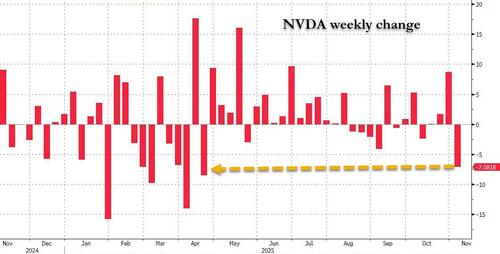
The term personal finance ratios might be giving you flashbacks to math class. Back then, if students looked like they were zoning out, your teacher might have told you “pay attention, this will be useful to you later.” Well, this time you don’t have to wait—a lot of the ratios below will be useful to you right now!
They are essentially quick equations that can help you make helpful financial calculations. Let’s learn more about what they are and ten of the top ones that you can start using today!
What is a personal finance ratio?
In mathematical terms, a ratio is essentially a way to compare two numbers to each other. Since personal finance is all about numbers, that can come in handy in many ways!
You can use ratios to keep track of many different aspects of your financial situation—from cash flow to savings to retirement and more.
A traditional ratio is expressed as a divisible number, but some of the financial ratios below use multiplication or subtractions instead.
Ultimately, just think of this as a formula that can help you track your money and how you use it. Keeping a record of your money ratios can also illuminate how these numbers change over time.
10 of the most useful personal finance ratios
The best way to explain the ratios is just to start showing you examples! So below, we’ll explain how to use each formula and why they’re helpful to your journey.
1. Monthly cash flow ratio
Formula: Monthly expenses divided by monthly income
This ratio helps you understand what percentage of your income is dedicated to your expenses each month. Think about the cash flow ratio as how much cash is flowing in vs flowing out.
Start by adding up all your regular income from jobs, side gigs, investment income, etc. You can choose whether to use a gross figure or your actual take-home pay after taxes.
Then, create or refer to your spending journal or a budgeting tool to see how much you’re spending every month. Don’t include savings or investments in your spending calculations (that has its own personal finance ratio)! Everything else is fair game: necessities, car payments, fun money, gifts, etc.
If you spend around $2,000 a month and you make $2,500, your cash flow ratio would be $2,000/$2,500 = 80%. It tells you that 80% of your income is being spent on expenses.
2. Savings ratio
Formula: Savings divided by income
This is basically the flip side of the one above! Instead of telling you how much you’re spending every month, it tells you your savings rate.
Include all kinds of savings here. Whether you’re putting money in a savings account, your company’s 401(k), your personal IRA, an investment account, or even setting aside physical cash, it qualifies!
Using the same monthly numbers as above, let’s say you’re putting the rest of your money ($500) towards savings and investments.
Your monthly savings ratio would be $500/$2,500 = 20% savings rate. You can also do the same to find your annual savings ratio.
3. Emergency fund ratio
Formula: Essential monthly expenses x 6
An emergency fund exists to protect you in the event of unexpected expenses or income loss. This is money you want to keep easily accessible, so you can use it as soon as you need to.
Since the common wisdom is to save 3-6 months’ worth of bills and expenses in your emergency fund, this ratio reflects that!
Simply multiply your essential monthly expenses by 6 to come up with your target for a fully stocked emergency fund.
You might be cutting out some of your “fun” budgets for this one. Just think about the things you can’t live without (housing, utilities, food, health insurance, etc).
Our example person may normally spend $2,000 a month, but let’s say that they can pare down their essential expenses to $1,500. $1,500 * 6 = $9000 would be the target for their emergency fund.
4. Liquidity ratio
Formula: Liquid assets divided by monthly expenses
The liquidity ratio is one of the personal finance ratios that is closely tied to your emergency fund since they both revolve around the idea of liquidity. Put simply, liquid assets refer to (A) cash or (B) other financial assets you can quickly convert into cash.
Money in a checking, savings, or also money market account is highly liquid. If you have savings bonds you can cash in any time, they’re liquid.
If you have stocks, bonds, index funds, and other “cash equivalents” that you can easily sell on the market, they would also qualify as liquid too. (However, their value tends to fluctuate more so it’s not a stable number).
Of course, you can’t just go sell your house on a whim for quick cash, so that’s a great example of a non-liquid asset. Money stored in retirement accounts also is illiquid, since withdrawals are subject to lots of rules and take time.
Once you have that figure, running the liquidity ratio formula will reveal how many months your liquid net worth could support you. So for someone who has $20,000 in liquid assets and spends $2,000 a month, it’s $20,000/$2,000 = 10 months of covered expenses.
5. Debt-to-assets ratio
Formula: Total liabilities divided by total assets
Now we’re getting into some potentially less fun territory: a couple of debt ratios. Don’t be scared if your numbers are higher than you’d like at first. It’s all part of your debt reduction journey!
If you don’t know where you’re starting from, you’ll just be stumbling around in the dark hoping one day your debt will be gone.
Add up your student loans, any consumer debt like credit cards, personal loans, car loans, and also whatever other kind of debt you’re carrying.
Then, sit down to calculate the value of your key assets, including all savings and investment accounts, paid-off vehicles, and personal valuables.
If you have $30,000 in total liabilities and $40,000 in total assets, you have $ 30k/$ 40k = 75% as much debt as assets.
House asset vs liability
What about your home? Is it an asset or a liability? It’s both!
Homeowners can choose whether or not to include their remaining mortgage balance as debt and home equity as an asset. (If you like, you can run the numbers with and without the home factored in.)
6. Debt-to-income ratio
Formula: Annual debt payments divided by annual income
This is one of the personal finance ratios that help you figure out how much of your income is being funneled toward your debts each year.
Look at the same debts you just gathered above, but this time add up your yearly payments towards each of them.
One exception is that if you’re a homeowner, it’s best to exclude mortgage debt from this equation—that’s a surefire way to kill your ratio! (Plus, housing payments fall more in the category of normal expenses than debt payoff.)
As your debts shrink, the result of this ratio will too! But if you’re adding new debts or paying things off too slowly, compound interest might increase your debt payments and subsequently this ratio.
Someone who’s making $15,000 in annual debt payments while earning $50,000 a year is paying $ 15k/$ 50k = 30% of their income to their debtors.
7. Net worth ratio
Formula: Total assets minus total liabilities
This is going to be a short and sweet one! Grab the same numbers you used in #5, but instead of dividing, we’ll simply subtract.
Assets minus liabilities give you your net worth! It’s motivating and fulfilling to watch this number grow over time.
Going back to our #5 example, $40,000 assets – $30,000 liabilities = $10,000 net worth.
8. Housing-to-income ratio
Formula: Monthly housing costs divided by monthly income
You’ve probably heard some form of advice for spending a certain percentage of your income on housing. In the past, the rule of thumb number was 30%. Now, there’s a slightly more detailed model called the 28/36 rule.
The first part (28) means you should aim to spend no more than 28% of your income on your total house payment, including taxes and insurance.
The second part (36) adds your mortgage payment to all your other debt payments and recommends for this total not to exceed 36% of your income. This is effectively the same thing as your debt-to-income ratio from #6 (but a mortgage-inclusive version).
The 28/36 rule is a way to help you weigh whether your home purchase would put you in too much debt. For instance, if a potential home purchase would bump you too far over the 36% debt-to-income figure, you might want to look at cheaper properties. Otherwise, you run the risk of becoming house poor!
If you’re spending $1,000 a month on housing while making $3,500, you’re spending $ 1k/$ 3.5k = just about 28% on housing.
9. Needs/wants/savings budget ratio
Formula: 50/30/20, 60/20/20, or other
Want a personal finance ratio that gives you a quick guide on how to divide your expenses? There are several ways to do this.
Usually, the simplest methods involve breaking down your expenses into needs, wants, and savings. Needs are everything you can’t live without, wants are the nice-to-haves, and savings are what you put aside for your future.
The 50/30/20 rule
One common budget ratio is called 50/30/20. In this formula, 50% of your income goes to necessities, 30% is reserved for discretionary income, and 20% gets saved.
Let’s see how this might work out for someone who makes $3,000 a month. The 50/30/20 ratio would mean $1,500 goes to needs, $900 to wants, and $600 to savings/investments.
Other percentages
All of these numbers can be tweaked depending on your situation. So if you’re spending 60% of your income on necessities, you might want to aim for more of a 60/20/20 breakdown, or even 70/20/10.
10. Retirement ratio
Formula: 25x your annual expenses
Ever find yourself asking “can I retire yet?” Once you stop working, you want to be confident that your savings and investments will be able to continue funding your life.
This formula is a tried-and-true method for calculating what you need in retirement. It’s also based on something called the 4% rule, which refers to the idea that a retiree can safely withdraw 4% of their savings each year with little risk of running out.
Calculating your retirement expenses
Look at your current annual expenses, and try to figure out if they’ll be higher or lower in retirement. Perhaps you’ll have a paid-off house by then and eliminate rent/mortgage expenses.
On the flip side, you might want to travel more or have extra for medical care. It never hurts to pad the numbers, but the 25x expenses formula is a great place to start.
Someone who spends $50,000 a year would ideally want $50,000 * 25 = $1.25 million to retire with confidence.
Why are personal finance ratios important for you?
Okay, you’ve just gone through a lot of math—take a breath! You might be wondering whether it’s really worth it to use these ratios on a regular basis or not. Ultimately, it’s totally up to you, but there are some good reasons to add them to your planning arsenal.
Personal finance ratios are great ways to distill tried-and-true financial wisdom into simple formulas that anyone can use.
If you want to know whether your savings are on track—there’s a ratio for that. Curious if you’re spending too much on housing? There’s a ratio for that.
Knowing your financial numbers can help you improve your life
Furthermore, keeping a record of these numbers lets you look back on where you’ve come from. As you learn new frugal living tricks, you can pare down your expenses and improve your cash flow ratio.
As your income grows and you pay off debt, you get to see those debt ratios shrink in front of your eyes while your net worth swells.
They’re some satisfying little equations that give you another way to track your finances and set new goals.
Calculate your personal finance ratios!
Now it’s officially your turn! In order to start crunching the numbers, you’ll need some key pieces of information in front of you. The main things you’ll need include:
- Total annual income
- Total monthly income
- Total debts/liabilities
- Monthly expenses (broken down by category)
- Total asset value
- Liquid asset value (aka cash or things you can quickly turn into cash)
Once you have these figures in front of you, the rest is just plug-and-play! You can recalculate these personal finance ratios as often as you want—say, once a month, once a quarter, or once a year—to stay on top of your finances. In addition, knowing your financial numbers can help you to become wealthy!















